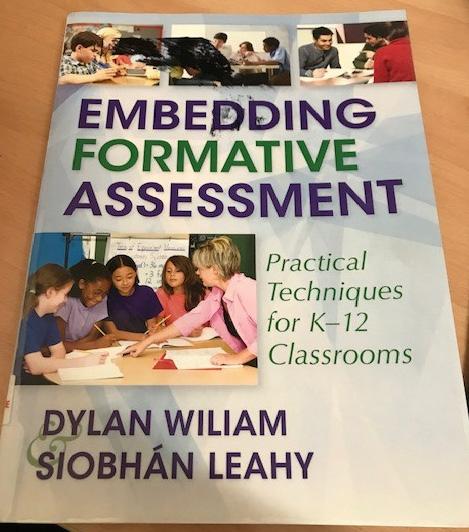
4 minute read
Formative Assessment in Humanities
Hello. My name is Greg Robinson. I am a Commerce teacher having taught for 15 years across Accounting, Business Management, Economics and Legal Studies, just to name a few. I have been at Braemar for two years and stepped into the role of Acting Instructional Leader – Humanities this year. Prior to commencing PLTs I had a little bit of knowledge about Dylan William’s work, having rescued his text Embedding Formative Assessment from a previous school.
The PLT experience this year was very useful and a great way to interact with astute teachers who you never really get the chance to interact with. Positives were the ability to share stories, ideas, triumphs and failures in the classroom all in the name of striving for continuous improvement to assist us in being the best teachers we can be. Just listening to what everyone else was trying sparks ideas that you could possibly integrate into your teaching. I really enjoyed just being able to listen to my fellow colleagues. Challenges faced were aligning periods for peer observation and sometimes mustering the energy for our PLT sessions during busy times of the year.
Early in the year Catherine Cruickshank shared that she used a Jar with named paddle-pop sticks to draw students names out to have a go at answering questions. I used this idea in my Y11 Business Management class with a modern twist, using a random name generator program on my phone. It was a bit of an incentive to try and ensure students were doing the questions set and knowing they could be called on at any time to answer questions. The aim was to have some accountability for their learning. This was used for Exit tickets too and I found that if it was applied consistently, the students got used to it and it just became an everyday part of most lessons.
My next trial was at Y12 Economics with the Cornell Note-Taking which was introduced at a Senior School Meeting mid-year. Katie French Peer Observed the first class. The process employed was to explain Cornell Note-Taking. The class then watched a 10 minute Economics clip and emphasised key words and jotted notes. We then had a group discussion and the students finally wrote summary notes of the economic content they watched. It was all about getting students to think and find a more efficient way to take notes. Katie observed that I used highly reflective questioning and the students considered the process useful for revision. This method was not a one-off as we watched many short economics clips and applied the Cornell Note-Taking to embed the skills learnt in the first initial lesson it was used. The students became familiar with the process and saw the effectiveness of applying these skills to gain a more efficient way of taking and understanding notes based on the economic content we were covering.
Another approach used was activating students as owners of their learning by sharing exemplars and evaluation with marking schemes in Y11 Business Management. Students were provided with: • the process of breaking down a question • definitions of content words • SAC questions and an exemplar responses • Examples of High, Medium and Low answers given by the class • Marking Scheme
The process of breaking down a question was explained to the class.
An explanation of the key content word and what the question was asking was discussed. We then looked at the High, Medium and Low responses and determined why each was given a certain amount of marks matched to an exemplar response that was detailed and answered exactly what was being asked in the question. Heidi Rees peer observed this class and noted “the teacher explains why marks are awarded or not and what to look for so students can apply method to their own work. Teacher encourages students to state the reasons why marks were allocated”.
By undertaking this process, I was trying to get students to identify that to do well, they need to know the key terms, such as evaluate, and understand that they need to identify strengths, weaknesses and provide an opinion. The exemplar response and marking scheme demonstrates to the students’ the level of effort required, and by having the students use this information and match to a High, Medium and Low response from the class, it hopefully aides in their understanding of where marks are allocated.
Overall, I felt the PLT groups created valuable discussions to assist us to try new things in the classroom to improve outcomes for our students. Regarding the activities I tried, I believe they worked well but only because they weren’t used in isolation as a novelty. I continually tried to incorporate the activity, whether it was the random name generator or Cornell note-taking as often as was practicable to embed it in my teaching to assist student learning. The activating students as owners of their learning by sharing exemplars and evaluation with marking schemes was only tried in November and I plan to continue to use this method with Y12 Business Management in 2023.
Mr Greg Robinson
VCE Humanities Teacher





